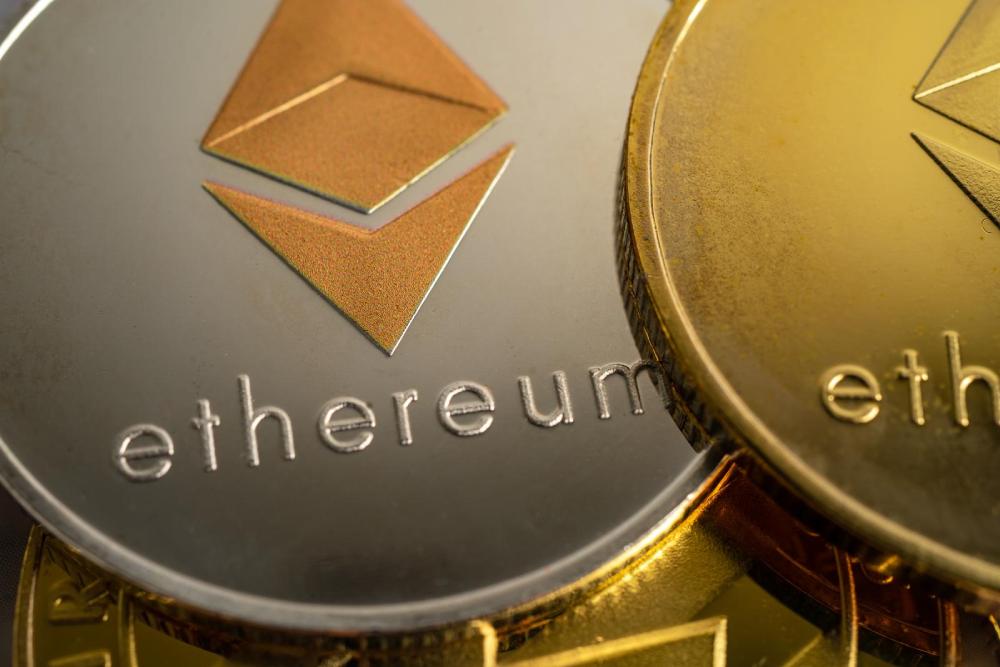When discussing ERC721 vs ERC1155, know both types of tokens have specific domains. Here is a detailed comparison between these two tokens.
Ethereum is the most widely used blockchain network after Bitcoin. And, when only speaking about NFTs and not any cryptocurrencies, Ethereum is the gold standard for all sorts of digital assets.
Ethereum’s two smart contracts, ERC-721 and ERC-1155, are mainly used for NFT minting since they support ownership proof for non-fungible items. However, due to some differences and benefits of ERC-1155 over ERC-721, the debate over ERC721 vs ERC1155 gets a continuous fuel.
Read on to learn how ERC1155 vs ERC721 fair in the Ethereum ecosystem. We also assess their role in the NFT space, for NFT coins, blockchain gaming and decentralized finance (DeFi) spectrums.
Don’t wait until you lose your NFTs. Grab a Ledger Nano X today and take control of your security.
Table of Contents
What Is the ERC-721 Smart Contract?

ERC-721 represents non-fungible tokens. These tokens are unique in value. You can’t trade one for the other except for money or cryptocurrencies of equivalent value. For example, Everydays: The First 5000 Days by Beeple sold for $69.3 million in ETH coins, not for another NFT.
Based on the Solidity language, ERC-721 smart contract kick-started the NFT craze. To produce a collection of 10,000 unique voxel art NFTs, you must choose the ERC-721 protocol.
For each NFT, the collectors must deploy an ERC-721 smart contract on the mainnet Ethereum, requiring dedicated time and gas fees for each token creation. It’ll, however, ensure maximum security and customization for each asset.
What Is the ERC-1155 Smart Contract?
ERC-721 made the Ethereum blockchain slower than ever. Each day thousands of smart contract blocks will be processed on the mainnet, reducing the network bandwidth and increasing gas fees for each token execution.
To overcome such scalability issues of Ethereum, Andrew Cooke, Witek Radomski, James Therien, Philippe Castonguay, Ronan Sandford, and Eric Binet proposed the ERC-1155 token standard in June 2018.
This multi-token standard lets NFT developers deploy fungible, non-fungible, and semi-fungible tokens in one smart contract. Thus, NFT project owners no longer need to mint separate ERC-721 tokens for a 10K NFT collection.
ERC-1155 standard is primarily vital for gamified DeFi apps or blockchain game apps. Since these apps need to have the capability to mint non-fungible tokens and then convert it into fungible ones depending on the game progression or tokenized content.
ERC721 vs ERC1155: Key Differences
1. ERC-721 can only represent NFTs. Whereas the ERC-1155 protocol can symbolize all digital asset classes like cryptocurrencies and NFTs.
2. Executing smart contracts under the ERC-721 protocol demands a hefty transaction costs or gas fees. On the contrary, ERC-1155 consumes 90% less gas than its counterpart.
3. There’s no provision for reversing an ERC-721 token transaction. But, you can call a transaction off if you have mistakenly sent an ERC-1155 token to an unknown crypto address.
4. EIP-721-based smart contract transactions create congestion on the Ethereum network. hence, this protocol is not suitable for scaling. On the other hand, EIP-1155 reduces network traffic. Hence, it’s appropriate for the scale-up of DeFi apps.
ERC1155 vs ERC721: The Similarities
1. Both these protocols enable NFT and blockchain gaming project owners to publish their content in the metaverse.
2. Know your customer (KYC), and Anti Money Laundering (AML) are available in both the smart contract protocols.
3. Both the protocols support the burn-and-mint equilibrium (BME) model for token economics.
What’s Good About ERC-721?
1. ERC-721 is the gold standard for digital assets.
2. So far, all the big-budget NFT projects have used the EIP-721 protocol. EIP and ERC are the same things.
3. One asset needs one smart contract to be written on the blockchain ledger. Hence, it offers better security and tracking of assets.
4. The ERC-721-based transaction is processed one at a time. Thus, there’s less chance for hackers to manipulate the entire chain of transactions. Because such tasks will require huge computation power, energy, and many trained personnel.
What’s Good About ERC-1155?
1. It is compatible with bundling an infinite number of digital tokens in one smart contract and processing the transaction.
2. You can create a digital asset with interchangeable value, and then when required, you can convert the same asset to a non-exchangeable commodity using this latest Ethereum protocol.
For example, pre-show concert tickets are exchangeable, but after the show, the tickets become an NFT.
3. You need to sign fewer transactions. Thus, the protocol is suitable for bulk transactions in DeFi apps.
4. It comes with the Safe Transfer function of the Ethereum network. You can recall the transaction if you mistakenly dispatched the token to the wrong address.
ERC721 Vs ERC1155: A Tabulated Comparison
| Specifications & Features | ERC-1155 | ERC-721 |
| Burn-and-mint model (BME) | Yes | Yes |
| Usability | Multiple operations in one go | Single operation/ transaction |
| Token Compatibility | Non-fungible, fungible, semi-fungible tokens | Only non-fungible tokens |
| Smart contracts | One smart contract for any number of assets | One smart contract for each asset |
| Token/Asset transfer | Batch transfer of many tokens | One token transfer at a time |
| Know your customer | Built-in AML and KYC | Built-in AML and KYC |
| Economy | Less storage, gas fees, and time for transaction execution | Higher storage, time, and gas fees/ transaction |
ERC721 vs ERC1155: Who Should Use ERC-721?
When you need to set up ownership over creative assets like artwork, songs, music, real-world collectibles, metaverse land, etc., you must use the ERC-721 protocol. It doesn’t let anyone exchange one NFT for the other.
But, it lets you transfer the asset to someone’s wallet address in exchange for crypto or fiat currencies.
Also, if your project allows digital assets to be owned, traded, or managed with the minimum interface on a smart contract, it should go with ERC-721. Because it doesn’t restrict the addition of supplemental functions. Moreover, there is no mandated standard for token metadata.
You can add generative arts, AI-guided artworks, game cards of athletes, in-game rewards, etc. in blockchains using the ERC-721 protocol.
ERC1155 vs ERC721: Who Should Use ERC-1155?
The ERC-1155 token standard is primarily for those blockchain apps and games that need to transact both fungible and non-fungible tokens in a single transaction.
For example, online multiplayer blockchain games contain tens of thousands of assets. These could be in-game coins, weapons, shields, armors, skins, castles, lands, badges, powers, clothing, vehicles, etc.
Some of the above are non-fungible, and some are fungible. All these assets are represented as tokens or smart contracts in a blockchain environment.
Before, ERC-1155, one has to create dedicated smart contracts for each asset. But, with ERC-1155, one smart contract is sufficient to complete one transaction consisting of mixed asset classes.
So you need to use the ERC-1155 standard if you launch any apps similar to the above example. Take a look at some real-world projects that use this protocol:
- Enjin platform has an NFT marketplace that lists mostly ERC-1155-based assets.
- Enjin’s Enjin Coin and Efinity Token are also based on ERC-1155.
- The blockchain gaming company Horizon has used the same standard for its Skyweaver game.
- Blockchain security products from OpenZeppelin also use EIP-1155.
- OpenSea ERC-1155 implementation allows a group of artists to be listed as creators for one smart contract while the lead artist can only mint more assets.
ERC721 vs ERC1155 Tokens: Which Is Better?
It’s imprecise to describe either ERC-721 or ERC-1155 superior to the other. Since digital assets like NFTs are still nascent, developers are also developing new token standards.
Both ERC-721 and ERC-1155 smart contracts are regarded in the Ethereum network or ecosystem. While NFT project developers choose ERC-721 for the non-fungibility of a digital asset like a PFP NFT project Cool Cats, ERC-1155 is useful for multi-token standards like fungible, non-fungible, semi-fungible, and valued in the blockchain gaming industry.
Hence, until the NFT sector sees maturity in technological developments, you must be cautious about using smart contract technologies in your NFT projects. Choose ERC-721 for fixed assets, and use ERC-1155 for convertibility.


